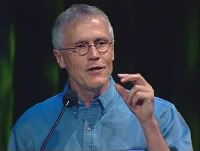Does Your Governor Know How You Feel?
In advance of the 2012 U.S. elections, the Koch brothers and other supporters of the status quo in energy policy are spending $1 billion to throw dirt at those with more progressive ideas. That’s more than John McCain and Barack Obama spent combined in 2008—and that election shattered records.
If you think that’s obscene, as do I, you join 70% of Americans who want a constitutional amendment to overturn the U.S. Supreme Court decision Citizens United that granted corporations the power to spend unlimited and undisclosed amounts of money influencing our elections. But such an amendment requires that three-quarters of state legislatures to be on board too.
That’s the bad news. The good news is that many state governors have not taken a stand on this – simply because they haven’t had to.
Here’s where you come in. Let your governor know that you’re a fan of democracy, of government by the people, not by the corporations. Here’s a handy way to make that happen. I just tried it out for you. It works. And it feels good.


 The spring season is a time of change and provides the perfect opportunity to reflect on the problems humans are facing around the world and the actions we can take to improve the situation. As we think about what we can do to help those who are suffering from the spring famine in the Sahel region of Africa, it is also a time to reflect on other water related problems around the globe. The global water crisis impacts billons of men, women and children every day and there are actions we can take to help these individuals.
The spring season is a time of change and provides the perfect opportunity to reflect on the problems humans are facing around the world and the actions we can take to improve the situation. As we think about what we can do to help those who are suffering from the spring famine in the Sahel region of Africa, it is also a time to reflect on other water related problems around the globe. The global water crisis impacts billons of men, women and children every day and there are actions we can take to help these individuals. 






